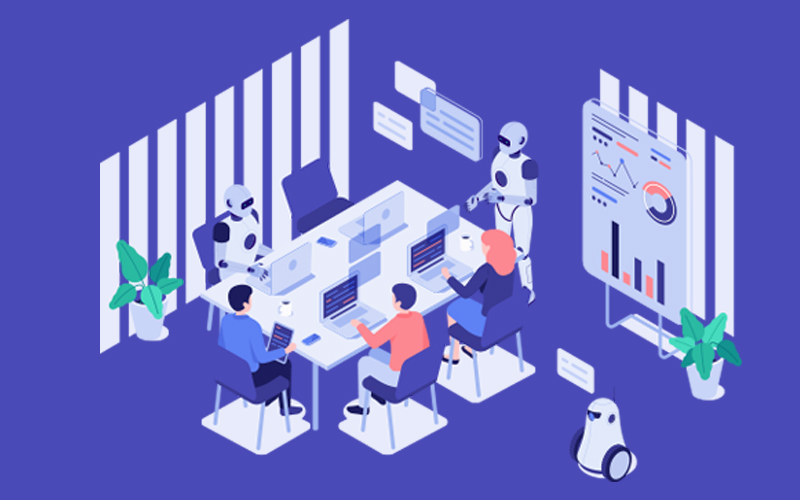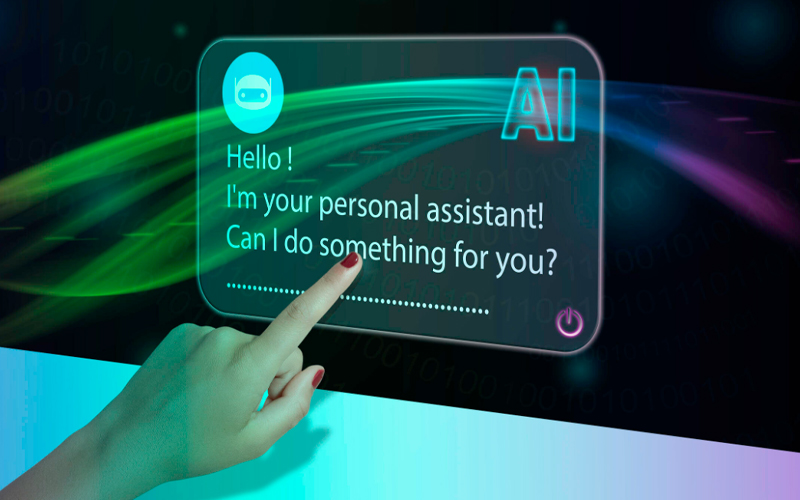Artificial Intelligence (AI) has become an integral part of daily life, seamlessly integrating into a variety of devices such as smartphones, laptops, tablets, smartwatches, TVs, and even household appliances like refrigerators. But not all AIs are equal; some are more capable than others. Agentic AI is one of the more recent advancements in the AI space and is expected to see widespread adoption in the coming years. According to Gartner, Agentic AI was used by only 1% of all corporations in 2024, but that number is expected to rise significantly to 33% by 2028. Deloitte expects that 50% of the companies already leveraging generative AI will begin exploring agentic AI by 2027. But what is agentic AI, and why is it expected to be leveraged by a third of corporations within the next three years?
what is agentic AI?
Agentic AI is the next step in the evolution of AI as a productivity and efficiency tool. Essentially, agentic AI software has agency. It can leverage Large Language Models (LLMs), Retrieval-Augmented Generation (RAG), machine learning, predictive algorithms, and more to create AI systems that do more than generate content. These agentic AI frameworks can function as autonomous, iterative, and adaptable digital workforce modules that can execute complex, multi-step, and effort-intensive tasks without needing constant human oversight and input.
Agentic AI can go beyond simply following instructions and start proactively learning, adapting, and solving problems. This makes it more than just a tool; it becomes a digital workforce capable of managing workflows end-to-end.
difference between agentic AI and generative AI
| Feature | Agentic AI | Generative AI |
| Primary Function | Makes decisions and takes autonomous actions to achieve specific goals. | Generates content (e.g., text, images, music) based on input data and patterns. |
| Learning and Decision-Making | Uses reinforcement learning to improve decision-making over time through real-time feedback. | Uses supervised and unsupervised learning to mimic creativity by producing new outputs from training data. |
| Output | Produces actions or decisions (e.g., driving a car, sending a report) | Produces creative outputs (e.g., stories, images, videos). |
| Autonomy | Fully autonomous, capable of executing tasks independently without human intervention. | Requires input (e.g., prompts, instructions) from humans to generate content. |
| Examples | Autonomous vehicles, robotic process automation (RPA), drones, and financial trading systems. | ChatGPT (text generation), DALL-E (image creation), AI music generators. |
how does agentic AI work?
Agentic AI works by integrating multiple components that allow it to process information, evaluate outcomes, and take autonomous actions. These systems rely on complex algorithms, such as machine learning and reinforcement learning, to continuously improve their decision-making capabilities.
For example, decision trees or neural networks help agentic AI determine the best course of action based on real-time data. Unlike conventional AI models, which require explicit instructions for each task, agentic AI learns to make decisions based on past actions and feedback from its environment.
Agentic AI is particularly powerful in environments where decisions need to be made quickly or when human involvement is impractical, such as autonomous vehicles or robotic process automation (RPA).
there are four primary steps that make up an Agentic AI software or program:
- Deconstructing the task – AI agents process the task and start gathering resources from all available inputs to help execute the task. This might involve extracting data, analysing media, or creating a workflow. The AI sets processes in motion to begin the task.
- Reasoning – Next, the AI uses the cognitive capabilities of an LLM (rather than its generative applications) and creates the cerebral core of the task. The decision-making aspect of agentic AI comes to the fore here, with tools like RAGs, external software, and additional AI agents or processes used to understand the task and plan steps.
- Execution – Once the agentic AI has the processes in place, it runs the workflow and executes the task based on the processes that it has created in the “Reasoning” stage. Compatibility with failsafe procedures and safety checkpoints are also validated at this stage.
- Iteration and augmentation – The final step involves refining and validating the results. This can be achieved through user input, a separate AI agent included for this very purpose, and ingestion of the results to create a validation data loop.
what are the benefits of agentic AI?
The benefits of agentic AI are immense, especially in industries that rely on automation and decision-making at scale. Some key advantages include:
- Increased Efficiency: Agentic AI can operate 24/7 without fatigue, enabling businesses to automate repetitive tasks and processes that previously required human input. This efficiency leads to reduced operational costs and faster decision-making.
- Improved Decision-Making: By processing large amounts of data and evaluating countless potential outcomes, agentic AI can make decisions that would be difficult for humans to achieve in real-time. This is particularly useful in fields like financial trading, where fast, data-driven decisions are crucial.
- Scalability: As systems powered by agentic AI become more prevalent, organizations can scale operations without the need for additional personnel. This ability to grow without corresponding increases in workforce size is a significant advantage.
- Increased Adaptability: Agentic AI systems can learn from their environment and adjust their actions accordingly. This adaptability is especially important in dynamic fields like healthcare or customer service, where needs can change rapidly.
Real-world examples of agentic AI applications include self-driving cars, which navigate and make decisions based on real-time data, and AI in healthcare, where diagnostic AI systems autonomously analyze medical images to provide real-time decision support to doctors.
example of Agentic AI in action
Agentic AI is already being implemented across various sectors. Below are some of the most prominent examples of agentic AI in action:
- Autonomous Vehicles: Self-driving cars use agentic AI to interpret their surroundings and make decisions about steering, braking, and acceleration without human intervention. This enables safer and more efficient transportation in cities.
- Healthcare Diagnostics: In medical imaging, AI systems can autonomously identify tumors or other abnormalities in X-rays and MRIs, providing quick and accurate diagnoses that assist healthcare professionals in decision-making.
- Supply Chain Management: AI-powered robots in warehouses use agentic AI to autonomously move and sort inventory, optimize supply chain logistics, and predict demand patterns in real-time, reducing the need for human labor.
- Financial Trading: In the finance sector, agentic AI is used to analyze vast datasets and execute high-frequency trades based on real-time market trends, often outperforming human traders by processing data at a fraction of the time.
Challenges of implementing agentic AI
Despite its potential, implementing agentic AI comes with several challenges:
- Technical Complexity: The development of agentic AI systems requires advanced algorithms and large datasets to function effectively. This can pose challenges for organizations that lack the necessary technical expertise or infrastructure.
- Ethical Concerns: There are concerns about the autonomy of AI systems, especially when it comes to decision-making in sensitive areas like healthcare or law enforcement. Ensuring that agentic AI is aligned with ethical principles is critical to avoid unintended consequences.
- Regulatory Issues: As agentic AI becomes more integrated into society, governments will need to establish regulations to ensure its safe and fair use. This may involve creating standards for AI development, testing, and deployment.
- Cost of Implementation: While agentic AI can lead to long-term savings, the upfront cost of developing and deploying these systems can be significant, especially for smaller businesses or startups.
Conclusion
In conclusion, Agentic AI is revolutionizing industries by offering unparalleled efficiency, scalability, and decision-making capabilities. While challenges remain, especially in terms of technical complexity and ethical concerns, the potential benefits of agentic AI far outweigh the drawbacks. As this technology continues to evolve, it promises to shape the future of automation, decision-making, and even human interaction with AI.
At Infosys BPM, we understand the importance of harnessing the full potential of advanced technologies like Agentic AI. Our comprehensive solutions help businesses seamlessly integrate AI into their workflows, enabling them to automate tasks, enhance operational efficiency, and achieve their strategic goals. With our expertise in digital transformation, we guide organisations through the process of adopting and scaling Agentic AI, ensuring they stay ahead of the curve and maximise the benefits of this cutting-edge technology.
faq around agentic AI
1. what is Agentic AI and how does it differ from traditional AI?
Agentic AI refers to systems that autonomously make decisions and take actions based on real-time data, without continuous human input. Unlike traditional AI, which often assists human decision-making or performs predefined tasks, Agentic AI acts independently, mimicking human-like decision processes in dynamic environments.
2. How does Agentic AI make decisions autonomously?
Agentic AI uses reinforcement learning and advanced algorithms to process vast amounts of data, evaluate potential outcomes, and make decisions that align with its objectives. These systems learn from feedback to improve their actions over time, enabling them to operate independently and make real-time decisions in various scenarios.
3. How does Agentic AI work in autonomous vehicles?
In autonomous vehicles, Agentic AI processes data from sensors and cameras to interpret the vehicle's environment, such as traffic signals, pedestrians, and road conditions. The system then autonomously makes steering, acceleration, and braking decisions to ensure safe and efficient navigation, all without human intervention.
4. What challenges are associated with implementing Agentic AI in businesses?
Implementing Agentic AI presents challenges like technical complexity, requiring advanced algorithms and substantial data for effective operation. Additionally, businesses face ethical concerns around autonomy in decision-making, regulatory compliance, and the high initial costs of deployment, especially for small and medium enterprises.
5. How does Agentic AI improve operational efficiency in industries?
Agentic AI enhances operational efficiency by automating repetitive tasks, reducing human error, and enabling faster decision-making. In industries like manufacturing, it can optimize workflows, while in healthcare, it can assist with real-time diagnostics. By operating 24/7, Agentic AI scales operations without additional human resources, leading to cost savings and increased productivity.







